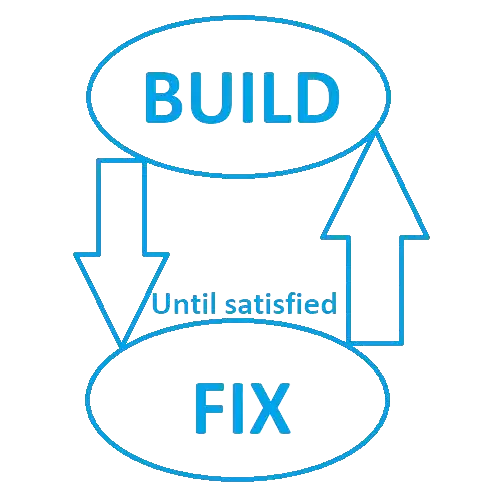1. Understanding the Build & Fix Model
The Build & Fix Model is an informal and ad-hoc software development approach. Unlike structured methodologies such as Waterfall or Agile, it lacks predefined phases and formal documentation. Instead, development begins immediately with a focus on quickly building a working prototype or application. Testing, debugging, and refinement occur concurrently as the software evolves.
2. Key Features of the Build & Fix Model
The Build & Fix Model is characterized by several key features:
- Rapid Prototyping: The emphasis is on quickly creating a working prototype to demonstrate functionality and gather user feedback.
- Minimal Planning: Formal planning, documentation, and requirements gathering are often minimal or nonexistent.
- Continuous Iteration: The software evolves through an iterative process, with frequent updates and changes based on user feedback.
- Minimal Testing: Comprehensive testing is often deferred until later stages, leading to potential quality issues.
3. Advantages of the Build & Fix Model
The Build & Fix Model offers some advantages for certain types of projects:
- Rapid Development: It allows for quick development and deployment of software, making it suitable for proof-of-concept or small-scale projects.
- Flexibility: The informal nature of the model allows for flexibility and easy adaptation to changing requirements.
- User Involvement: Users can see and interact with the software early in the development process, providing valuable feedback.
4. Limitations and Challenges
Despite its advantages, the Build & Fix Model has significant limitations:
- Lack of Structure: The absence of formal processes can lead to chaotic development, making it challenging to manage larger projects.
- Quality Issues: Minimal testing can result in software with numerous bugs and issues, compromising reliability and user satisfaction.
- Scope Creep: Without proper requirements gathering and planning, projects are susceptible to scope creep, leading to delays and increased costs.
5. Conclusion
The Build & Fix Model, while offering rapid development and flexibility, is most suitable for small-scale projects or prototypes. It may not be the ideal choice for larger or mission-critical applications where structured methodologies like Agile or Waterfall are better suited. When considering the Build & Fix Model, it's crucial to weigh its advantages against its limitations and carefully assess whether it aligns with the project's goals and requirements.

